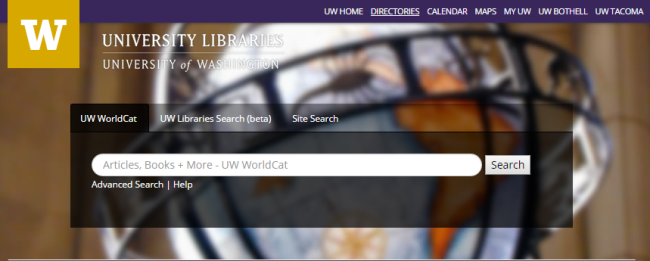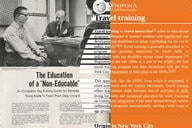You have /5 articles left.
Sign up for a free account or log in.

An example of a university library search box.
University of Washington
As faculty members and students find new ways to locate scholarly research, a new report encourages college and university libraries to re-evaluate whether their efforts to connect users with content are money well-spent.
The challenge comes from the nonprofit research organization Ithaka S+R, which promotes innovative forms of teaching and scholarly communication. In a report that builds on Ithaka’s annual library survey, Roger C. Schonfeld, program director for libraries, users and scholarly practices, asks university libraries to examine what he called one of the “linchpin issues” scholars face in their research: How can they find what they need, and how can libraries help them?
“These are hard problems for libraries and for publishers and for that whole community, but they matter tremendously across academia,” Schonfeld said in an interview. “They directly affect every faculty member and student who [doesn't] necessarily want to spend a lot of time thinking about these issues, but when it’s time for them to go to a literature review or write a paper or move into a new research project, they want to discover the things they need as quickly and efficiently as possible.”
The library’s traditional role as the gateway to research is one of many that are being challenged by technology. Not only are scholarly databases generating more and more of their traffic from generic search engines such as Google, but the databases themselves are launching new initiatives to draw readers directly to their content.
Yet opinions about the role of university libraries have not changed as dramatically. Most library directors -- more than three-quarters, according to the library survey -- want their libraries to be the first place faculty and students go to find scholarly content. At the same time, only a little more than half say the library is always the best place to start.
“The gap in the share seeing strategic value in serving as the starting point and those that think the library is always best suited in this role suggests that many library leaders may recognize limitations to the vision or failures to date in executing on strategies that could work towards this vision,” Schonfeld writes.
Still, university libraries have continued to invest in discovery services. The report urges institutions to define what a successful return on investment in those services means -- whether it’s an increase in the number of unique users visiting the library website or the share of content accessed through it.
“When we look at whether it adds up to an investment that is sustainable over time, that is likely to achieve its objective -- those are questions that can be assessed, that can be evaluated,” Schonfeld said.
Institutions have generally chosen low-risk partnerships over radical redesigns to improve the discovery services they offer to scholars, Schonfeld noted. Four universities in North Carolina, for example, have since 1989 maintained the Triangle Research Libraries Network, which was founded to “marshal the financial, human, and information resources of their research libraries through cooperative efforts.” Similarly, Columbia and Cornell Universities in 2009 launched 2CUL, a partnership between their university libraries. In both cases, the universities are working to make their collections available to scholars at any one of the institutions.
"But these are all efforts to take advantage, typically, of a kind of trusted set of peer institutions or some kind of local or regional trust network,” Schonfeld said. He added that he has yet to see a university library take itself out of the discovery process altogether and simply slap a Google search box on its home page -- nor that he would endorse such a move.
Many university libraries have at least tried to imitate Google and other search providers’ design, greeting visitors with a single search box on an otherwise uncluttered page, but those similarities are often skin-deep. While university libraries are able to link that search box to a number of scholarly databases, the search experience is often identical for the graduate student of philosophy and the tenured professor of physics. Google, however, uses data collected from past searches to build user profiles and recommend personalized results.
Schonfeld said he generally supports more search engine personalization, but he recognized that many researchers still have qualms about that sort of data collection and the privacy issues it raises. “I think that tradeoff is a very real one for a lot of librarians -- tradeoffs that the Googles of the world have accepted,” he said.
Based on past studies of how scholars begin their research, some customization may be a welcome change. Humanities scholars, the report notes, are much more likely to use the library website as a starting point than their colleagues in the sciences or social sciences, who in turn often head straight to a specific scholarly database.
Institutions themselves may display their own research quirks. Ithaka last year looked at how students conduct research at Indiana University and the University of North Carolina at Chapel Hill, and found that students at the latter institution were more than twice as likely to begin their research at the library’s website.
“Is a single search box that doesn’t know anything about its user able to provide for all of those needs?” Schonfeld said. “As you start to distinguish between both different institutions and different populations within any given institution, the opportunity to complicate what a single search box is and what it could be is one of the next steps that’s coming to this conversation.”




